Ants are some of the most common pests that invade our homes and outdoor spaces. While a few ants may not seem like a big deal, they can quickly multiply into an infestation if left unchecked.
This is why ant control and prevention are of utmost importance. By taking proactive measures to keep ants at bay, you can avoid the hassle, discomfort, and potential damage they can cause.
Discover Our Expert Ant Control and Extermination Solutions! Explore the efficiency of our skilled ant control and extermination services in tackling your ant-related concerns. Click to find out more about our specialized ant control and extermination services today!
The potential damage caused by ants
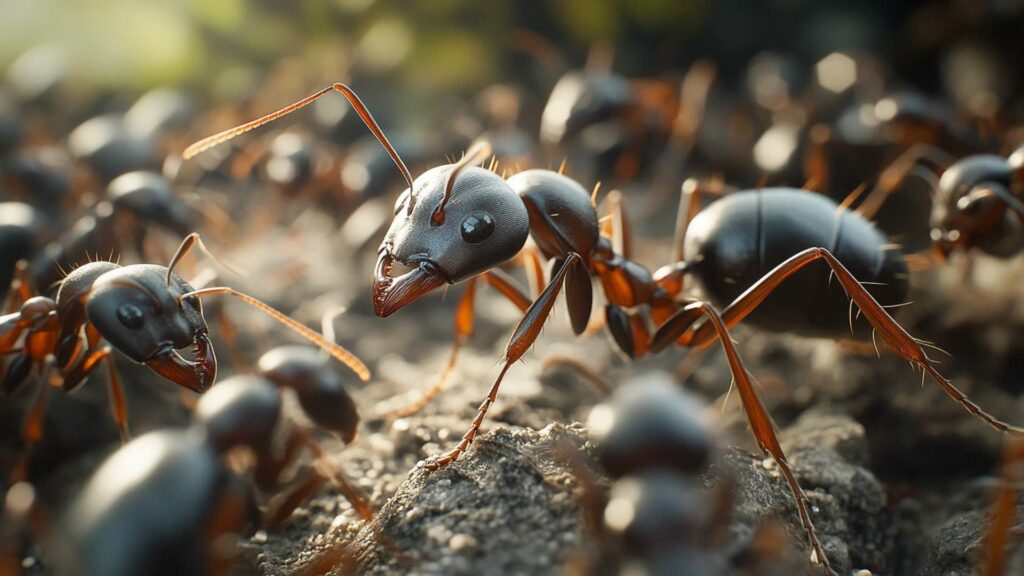
Ants may be small, but their presence can lead to significant problems. When ants invade your home or garden, they can contaminate your food sources, which poses health risks for you and your family. Additionally, some ant species have powerful jaws that can cause structural damage by excavating wood or burrowing into cracks in walls or foundation.
Carpenter ants are particularly notorious for causing such harm. Furthermore, when ants establish pheromone trails indoors, it becomes easier for other pests to follow these paths into your home.
Therefore, it’s essential to address an ant infestation promptly to prevent further complications. Ant control and prevention methods vary depending on the situation at hand.
From natural remedies like using vinegar or lemon juice as repellents, to effectively eradicating ant colonies with targeted insecticides, there are numerous ways to stop ants from gaining a foothold in your living spaces. By exploring these strategies and staying proactive in maintaining cleanliness and sealing up potential entry points for ants, you can create an environment that discourages their presence.
Remember that prevention is key when it comes to dealing with ants – addressing the problem before it escalates will save you time and effort down the line. So let’s delve deeper into understanding different types of ant infestations and explore efficient ways to combat them head-on!
How to Get Rid of Sugar Ants Are sugar ants invading your kitchen? Our expert pest control team has the solution. Learn how to effectively get rid of sugar ants and keep your home sweet-ant-free.
Dealing with Flying Ants Discover the secrets of dealing with flying ants. Our professional extermination services can help you say goodbye to these pests. Click to learn more about eliminating flying ants.
Ant-Free Car Solutions Ants in your car can be a nuisance. Learn how to get rid of ants in a car effectively and protect your vehicle from these unwanted passengers.
Overnight Ant Bite Relief Suffering from painful ant bites? You can find relief overnight with our expert tips. Explore how to get rid of ant bites overnight and ease the discomfort.
Bathroom Ant Infestation Ants in the bathroom can be quite a bother. Discover how to effectively get rid of ants in the bathroom and maintain a hygienic, ant-free space.
Protecting Hummingbird Feeders Are ants swarming your hummingbird feeders? Click to explore our advice on keeping ants out of hummingbird feeders and ensure your tiny, feathered friends enjoy a meal.
Eliminating Sugar Ants Sugar ants can quickly become a problem in your home. Learn how to kill sugar ants effectively and prevent their return.
Ant Hill Removal Are ant hills disrupting your yard? Our expert pest control methods can help you get rid of ant hills and maintain a neat, ant-free lawn.
Small Black Ant Solutions Small black ants can be a persistent issue. Explore our strategies to get rid of small black ants and ensure a pest-free home.
Ant-Free Living Spaces Do you want to enjoy a home without ant infestations? Click to explore our tips on getting rid of ants in your home and ensure a clean, ant-free living environment.
Different Species of Ants and Their Characteristics
Ants are fascinating creatures that come in various species, each with its unique characteristics. Some common ant species you may encounter include carpenter ants, odorous house ants, and fire ants.
Carpenter ants are larger in size than sugar ants and are known for their ability to create tunnels within wood structures. They do not consume wood but excavate it to build nests.
On the other hand, odorous house ants emit a distinct smell when crushed, often described as a rotten coconut or blue cheese odor. Fire ants are notorious for their painful stings and aggressive behavior.
The Social Structure of Ant Colonies
Ants are highly social insects that live in organized colonies. Each colony consists of three primary castes: the queen, workers, and males. The queen’s role is to lay eggs and establish the foundation of the colony.
Workers handle various tasks such as foraging for food, caring for larvae, maintaining the nest, and defending against threats. Male ants have a singular purpose: to mate with the queen during their nuptial flight.
The hierarchy within an ant colony is fascinating; queens hold a position of power while workers carry out most of the daily activities. The queen communicates through chemical signals known as pheromones to maintain order within the colony.
Ant Communication and Foraging Patterns
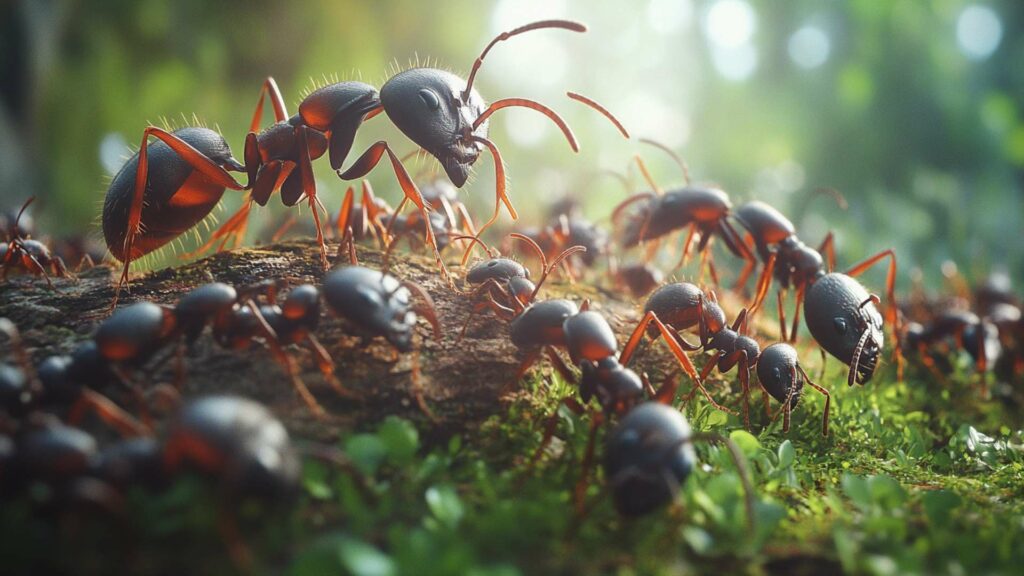
Ants communicate primarily using chemicals called pheromones. These chemical signals allow them to coordinate tasks efficiently and establish trails between food sources and their nests. When an ant discovers a new food source—such as crumbs or spilled maple syrup—it leaves behind pheromones along its path back to signal other members of its colony about the find.
Foraging patterns can vary among different ant species. Some ants have specific dietary preferences while others are generalists when it comes to finding food sources.
Ants will travel considerable distances to obtain food and often utilize well-established foraging trails. In the case of odorous house ants, they are attracted to sugary substances like maple and corn syrup alone, while fire ants are known to scavenge on dead insects or other protein sources.
Understanding ant behavior and biology is crucial for effective ant control and prevention. By knowing the characteristics of different ant species, their social structure, and communication methods, it becomes easier to devise strategies that disrupt their behavior patterns and eliminate ants and colonies when necessary.
Identifying Common Ant Infestations
Signs of an Ant Infestation in Homes or Gardens
When it comes to identifying an ant infestation in your home or garden, there are several telltale signs to watch out for. One of the most obvious indicators is spotting a trail of ants marching in a line, searching for food sources.
These little creatures are excellent foragers and can quickly locate even the tiniest food crumbs, or spills that may have escaped your attention. Another common sign is finding ant nests, which can range from small mounds outdoors to hidden spaces indoors such as wall voids or cracks.
In addition to visible trails and nests, keep an eye out for other signs like discarded wings near windowsills or door frames. Winged ants are reproductive individuals who emerge from colonies during mating seasons.
Their presence suggests that an established ant colony may be nearby, and further investigation is warranted. If you notice damage to wooden structures or sawdust-like debris accumulating around it, you could be dealing with carpenter ants that tunnel through wood.
Differentiating Between Various Types of Ants
It’s essential to identify the specific type of odorous house ant infesting your space as different species require different control methods. One common type is sugar ants (also known as odorous house ants), attracted to sweet food sources.
They leave behind a distinct odor when crushed (similar to rotten coconut) due to their unique biology. Another notorious species is fire ants, known for their painful stings and aggressive behavior when disturbed.
These reddish-brown pests build large mounds outdoors and can cause significant discomfort if they come into contact with humans or pets. Pharaoh ants are tiny yellowish-brown insects commonly found in indoor spaces like kitchens and bathrooms.
They are notoriously difficult to eliminate due to their intricate nest structure and tendency to split into multiple colonies when disturbed. Identifying the ant species is crucial because it helps determine the most effective control methods.
While some infestations can be managed through DIY measures, others may require professional intervention to ensure complete eradication and prevent future infestations. Remember, if you’re unsure about the type of ant problem you’re facing or if the infestation seems severe, consulting a pest control expert is always a wise decision to protect your home and regain peace of mind.
Natural Ant Control Methods
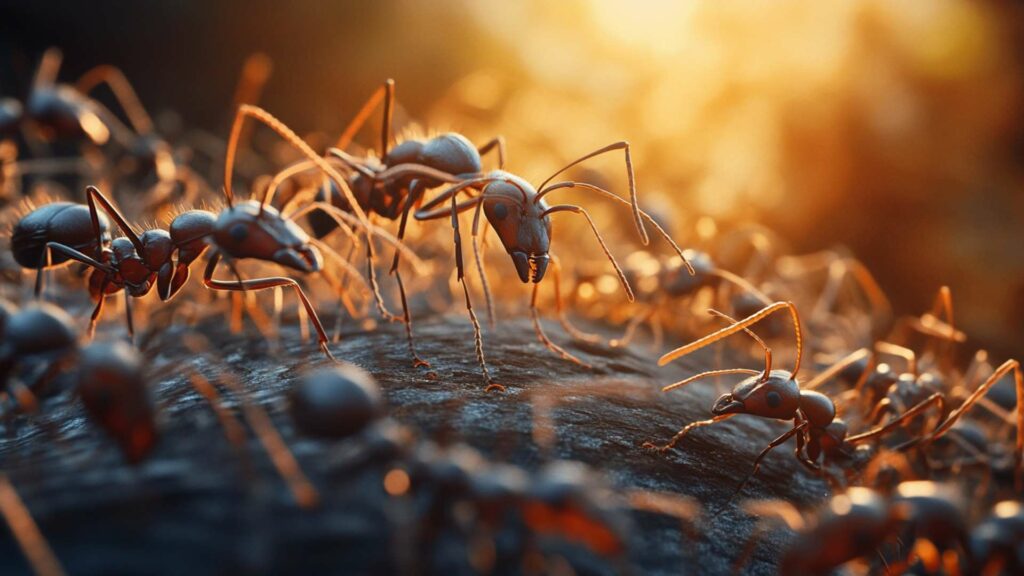
Using Vinegar, Lemon Juice, or Essential Oils as Repellents
One effective and natural way to repel ants is by using common household ingredients such as vinegar, lemon juice, or essential oils. These strong scents are highly disliked by ants and can deter them from entering your living spaces.
To make a simple ant repellent spray, mix equal parts water and white vinegar in a spray bottle. Spray this solution along ant trails, entry points, and areas where you’ve noticed ant activity.
The strong odor will kill ants, disrupt their communication pathways, and discourage them from venturing into your home. Lemon juice works similarly to vinegar in deterring ants.
Squeeze fresh lemon juice into a spray bottle filled with water and apply it to the areas prone to infestations or where you’ve spotted ants roaming around. Another fragrant alternative is using essential oils like peppermint oil, tea tree oil, or eucalyptus oil.
These oils have strong odors that repel ants while leaving a pleasant scent for humans. Mix a few drops of your preferred essential oil with water in a spray bottle and generously spritz it around entryways or any areas attracting ants.
Creating Physical Barriers to Prevent Ant Entry
When it comes to natural ant control methods, creating physical barriers can be highly effective in preventing ant invasions.
Since ants are tiny creatures capable of squeezing through even the tiniest gaps, sealing off potential entry points is crucial. Start by inspecting your home for cracks in walls, gaps in windowsills, or openings around doors—any place through which ants could infiltrate.
To seal these entrances effectively, use a silicone-based caulk that matches the color of the surface you are sealing. Apply a thin, continuous line of caulk along the cracks and crevices.
Pay attention to areas near water sources, as ants are often attracted to moist environments. Ensure all exterior walls also have weatherstripping or door sweeps installed to prevent ants from sneaking in under doors.
Utilizing Diatomaceous Earth for Ant Elimination
Diatomaceous earth is a natural substance that consists of fossilized remains of tiny aquatic organisms called diatoms. While it may sound intimidating, diatomaceous earth is safe for humans and pets but deadly to insects, including ants.
It works by puncturing the exoskeleton of ants and dehydrating them, leading to their demise. To use diatomaceous earth for ant control, sprinkle a fine layer around ant trails, entry points, or any areas where you’ve noticed ant activity.
Focus on places where food sources are present, such as kitchen countertops or near pet bowls. Make sure to use food-grade diatomaceous earth rather than the one used for pool filters since it’s specifically processed for safe household use.
Remember that diatomaceous earth takes some time to work effectively, so be patient during the process. Avoid directly inhaling the powder by wearing a mask while applying it and keep children and pets away from treated areas until the dust settles.
By harnessing natural solutions like vinegar sprays, physical barriers, and diatomaceous earth, you can take proactive measures against ant invasions without resorting to harmful chemicals or expensive pest control services. Incorporating these natural methods into your routine not only helps you combat immediate ant problems but also serves as an effective long-term prevention strategy against future infestations.
Chemical Ant Control Options
Overview of commonly used insecticides for ants
When it comes to combating ant infestations, homeowners often turn to chemical ant control options as a last resort. While natural methods are preferred, sometimes the situation calls for more aggressive measures. In such cases, understanding the different types of insecticides available and their effectiveness is crucial.
Pyrethroids: How they work and their effectiveness
Pyrethroids are a type of synthetic chemical commonly used in ant control products. Derived from chrysanthemum flowers, these insecticides disrupt the nervous system of ants upon contact or ingestion. They are particularly effective against a wide range of ant species, including pavement ants and pharaoh ants.
When using pyrethroid-based products for ant control, it is important to follow the instructions carefully and apply them directly to areas where ants are active or may enter your home. Keep in mind that pyrethroids can be harmful to beneficial insects as well as killing ants, so use them sparingly and only when necessary.
Baits: Types, placement strategies, and considerations
Ant baits are another popular chemical option for controlling ant infestations. These baits contain toxins that specifically target ants while keeping other household members safe. The idea behind bait traps is simple yet effective: scout ants find the bait and bring it back to the colony as food, effectively poisoning the entire population.
Different types of ant baits are available on the market, including gel-based baits or granular formulations. Gel baits work well indoors as they can be applied in cracks and crevices where ants tend to hide.
Granular insecticides are more suitable for outdoor use around entry points or areas with high ant activity. Placement strategies play a crucial role in bait effectiveness.
It’s essential to identify ant trails and place the bait traps along their path or near their nests. Additionally, avoid using any chemical sprays or cleaning agents in the vicinity of bait traps, as they can repel ants and render the baits ineffective.
Granular insecticides: Their application and benefits
Granular insecticides are a versatile option for ant control, especially when dealing with outdoor infestations. These products come in tiny granules that contain slow-release chemicals for prolonged effectiveness.
When applied correctly, granules create an ant-repelling barrier around your home, effectively deterring ants from entering. To use granular insecticides effectively, start by identifying ant colonies’ entry points and trails.
Carefully apply the granules in a band around these areas or directly on top of visible ant mounds. Make sure to follow the instructions regarding dosage and distribution methods.
One of the key benefits of using granular insecticides is their residual effect. Once applied, they can provide long-lasting protection against future ant infestations, making them an excellent preventive measure.
However, it is important to remember that these products should be used judiciously to minimize environmental impact and avoid harm to beneficial insects. Chemical ant control options can be effective tools when dealing with stubborn ant infestations.
Pyrethroids offer direct contact or ingestion poisoning methods against a wide range of ants. Ant baits are designed to target entire colonies by exploiting ants’ feeding habits while keeping other household members safe.
Granular insecticides create a protective barrier around your home and help prevent future invasions. However, it’s crucial to always carefully read and follow product instructions while minimizing adverse effects on the environment and beneficial insects.
Preventing Future Ant Infestations
Maintaining Cleanliness in Indoor Spaces
To prevent future ant infestations, maintaining cleanliness in indoor spaces is crucial. Ants are attracted to food sources and crumbs left behind, so it’s essential to keep your living areas clean and tidy.
Regularly sweep or vacuum floors to remove any food debris that may attract ants. Pay close attention to kitchen countertops, dining areas, and floors where food particles tend to accumulate.
Additionally, regular cleaning of your pantry is essential. Keep all food items stored in airtight containers to prevent ants from gaining access.
Wipe down shelves and surfaces using a mild detergent or vinegar solution regularly. Pay attention to hidden spots such as cracks and crevices where ants might find their way into your home.
Proper Food Storage Practices to Deter Ants
One of the most effective ways to deter ants is through proper food storage practices. Ensure that all food items are stored in tightly sealed containers made of glass or plastic.
This prevents ants from detecting odors and accessing potential food sources. Pay special attention to sweet items like sugar, honey, or maple syrup as these can be particularly attractive for ants.
Store them in secure containers with airtight lids and wipe away any spills immediately. Avoid leaving uncovered fruits on countertops as they can quickly become targets for ant infestations.
It’s also important not to leave pet food exposed for extended periods of time as this can attract not only ants but other pests as well. After each feeding, remove any remaining pet food and store it properly in sealed containers.
Landscaping Tips to Discourage Outdoor Ant Colonies
To discourage outdoor ant colonies from approaching your home, implementing certain landscaping techniques can be beneficial. Firstly, trim back tree branches or shrubs that may touch or overhang your house. Ants can use these as bridges to gain access to your home.
By maintaining a clear space between vegetation and the exterior of your house, you create a barrier that deters ants from reaching your living spaces. Secondly, consider creating a gravel or stone border around the foundation of your home.
Ants find it difficult to navigate on loose surfaces, so this acts as a physical deterrent against their entry. Be mindful of standing water in your yard.
Ants are attracted to moisture, and puddles or leaky irrigation systems can provide them with a water source. Regularly check for any sources of standing water and address them promptly.
By implementing these cleanliness practices, proper food storage techniques, and landscaping tips, you can significantly reduce the risk of future ant infestations both inside and outside your home. Remember that prevention is key when it comes to dealing with ants effectively.
Dealing with Specific Types of Ants
Carpenter ants: Identification, prevention, and control methods
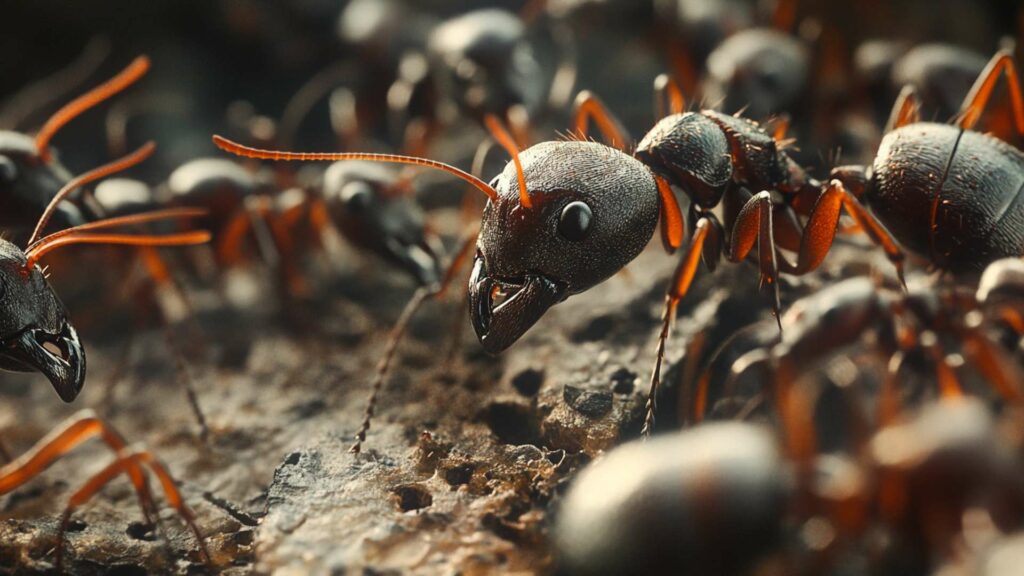
Carpenter ants may look harmless, but they can cause significant damage to wooden structures in your home. Identifying these ants is crucial for effective control. Carpenter ants are usually larger in size compared to other ants, and their color varies from black to reddish-brown. They build their nests inside decayed or moist wood, so keep an eye out for sawdust-like material known as frass near potential nesting sites. To prevent carpenter ant infestations, it’s vital to address any moisture issues in your home. Fix leaks promptly and ensure proper ventilation in areas prone to dampness. Regularly inspect and replace damaged or rotten wood around your property as it serves as an attractive nesting site for carpenter ants. When it comes to controlling these stubborn pests, a combination of approaches is often necessary. Start by eliminating any food sources that might attract them; seal all food items in airtight containers and clean up food spills, promptly. To directly target the nests, use ant bait stations containing slow-acting insecticides specifically designed for carpenter ants. These baits are carried back to the nest and shared with the entire colony, effectively eliminating them over time.
Fire ants: Understanding their behavior and effective eradication techniques
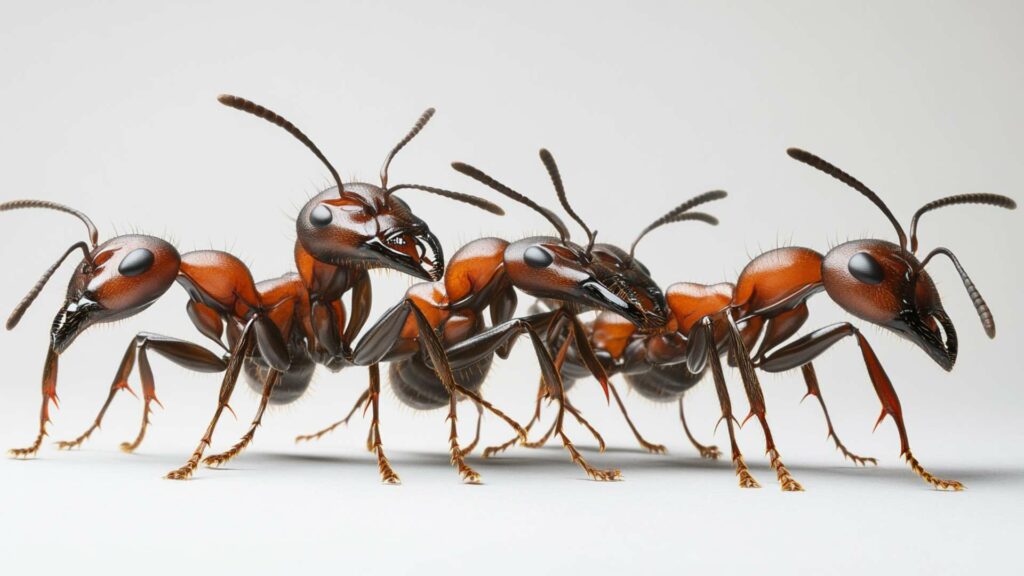
Fire ants are notorious for their painful stings and aggressive nature, making eradication essential if they invade your property. These reddish-brown creatures build large mounds visible on lawns or garden beds. Understanding fire ant behavior is crucial for effective control strategies. Fire ant colonies have a queen responsible for reproduction and worker ants that gather food and protect the nest aggressively when disturbed. It’s important not to disturb fire ant mounds without proper protection as even accidentally stepping on one can result in multiple stings. To tackle fire ant infestations, a combination of chemical and natural methods can be employed. Broadcasting fire ant baits around the perimeter of your property is an effective way to target entire colonies. The worker ants carry the bait back to the mound, resulting in colony-wide eradication. Additionally, using insecticide dust directly on visible mounds can provide quick results.
Pharaoh ants: Challenges in elimination and professional intervention
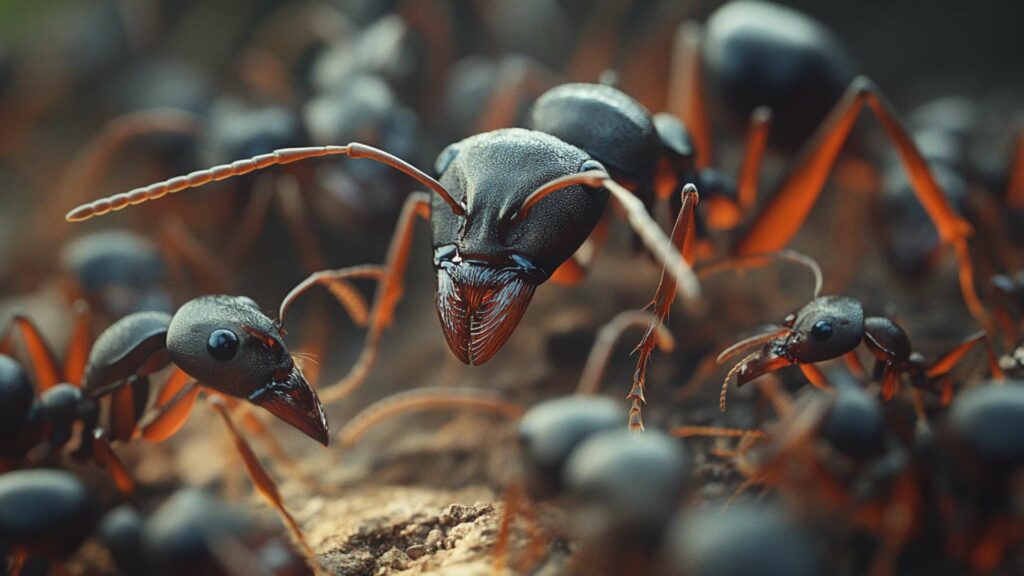
Pharaoh ants may be small in size, but they pose a significant challenge when it comes to elimination due to their resilient nature. These light-yellow or red-brown ants are known for their ability to quickly establish colonies indoors, often nesting in wall voids or electrical outlets. Attempting to handle a pharaoh sugar ant infestation problem without professional assistance can lead to further complications as these pests have multiple queens and split apart easily, making it difficult for non-experts to eradicate them completely. Professional pest control services are typically recommended for dealing with pharaoh ants. Pest control experts have access to specialized baits that are highly effective against these stubborn pests. They understand their behavior patterns and can strategically place baits near scent trails or potential nesting sites, effectively targeting the entire colony for elimination. Remember, in cases of pharaoh ant infestations, prompt action is crucial as these pests multiply rapidly and can become an ongoing nuisance if left unaddressed. Seeking professional intervention will save you time, effort, and prevent further frustrations associated with recurring infestations. By understanding the characteristics and behaviors of specific types of ants like carpenter ants, fire ants, and pharaoh ants, you will be better equipped to deal with any potential infestation effectively. Implementing prevention measures based on the specific needs of each type is essential for long-term control success. In cases where professional help is required due to challenges in eradication or potential health risks associated with certain species like pharaoh ants, it’s advisable to seek the assistance of a reputable pest control service.
Professional Pest Control Services for Ants
When to Consider Hiring a Professional Exterminator
If you find yourself facing a persistent ant problem that seems resistant to your efforts or if you are dealing with specific types of ants such as fire ants or carpenter ants, it may be time to call in the professionals. Professional exterminators have the expertise and experience to effectively tackle complex ant infestations that require specialized knowledge and treatment methods. Additionally, if your attempts at DIY ant control have been unsuccessful or if the infestation poses a risk to your health or property, seeking professional help is highly recommended.
What to Expect During a Pest Control Treatment
When you hire a professional pest control service for ant eradication, they will first conduct a thorough inspection of your property to determine the extent of the infestation and identify the ant species involved. Based on this assessment, they will develop an appropriate treatment plan tailored to your specific situation.
The treatment process kills ants typically involves several steps: – The exterminator will use targeted insecticides designed specifically for ants, which are more effective than generic options available over-the-counter.
– They may employ bait stations strategically placed near ant trails and entry points, enticing worker ants to carry the bait back to their colony. This ensures that not only do the worker ants perish but also their fellow nestmates.
– In some cases, localized treatments like dusting voids or injecting insecticide into wall voids may be necessary. – The professionals will also advise you on preventive measures and provide guidance on how to avoid future infestations.
Conclusion
Controlling an ant infestation can be challenging, but with proper knowledge and access to effective solutions, it is possible to reclaim your space from these pesky invaders. Whether you choose to tackle the problem yourself using natural solutions like diatomaceous earth or essential oils, or opt for professional assistance, persistence and consistency are key.
By addressing the ant issue promptly and taking preventive measures to discourage their return, you can restore peace and harmony in your home or garden. So don’t let those ants dampen your spirits – take action today and regain control of your environment!
Frequently Asked Questions:
Maintaining a clean environment, sealing food, and using ant baits are effective for long-term ant deterrence.
The best method of ant control typically involves a combination of sanitation, sealing entry points, and using ant baits or insecticides.
Professionals use a range of tools, including specialized baits and pesticides, to control ant infestations.
While it’s possible to significantly reduce ant infestations, complete and permanent elimination can be challenging.







